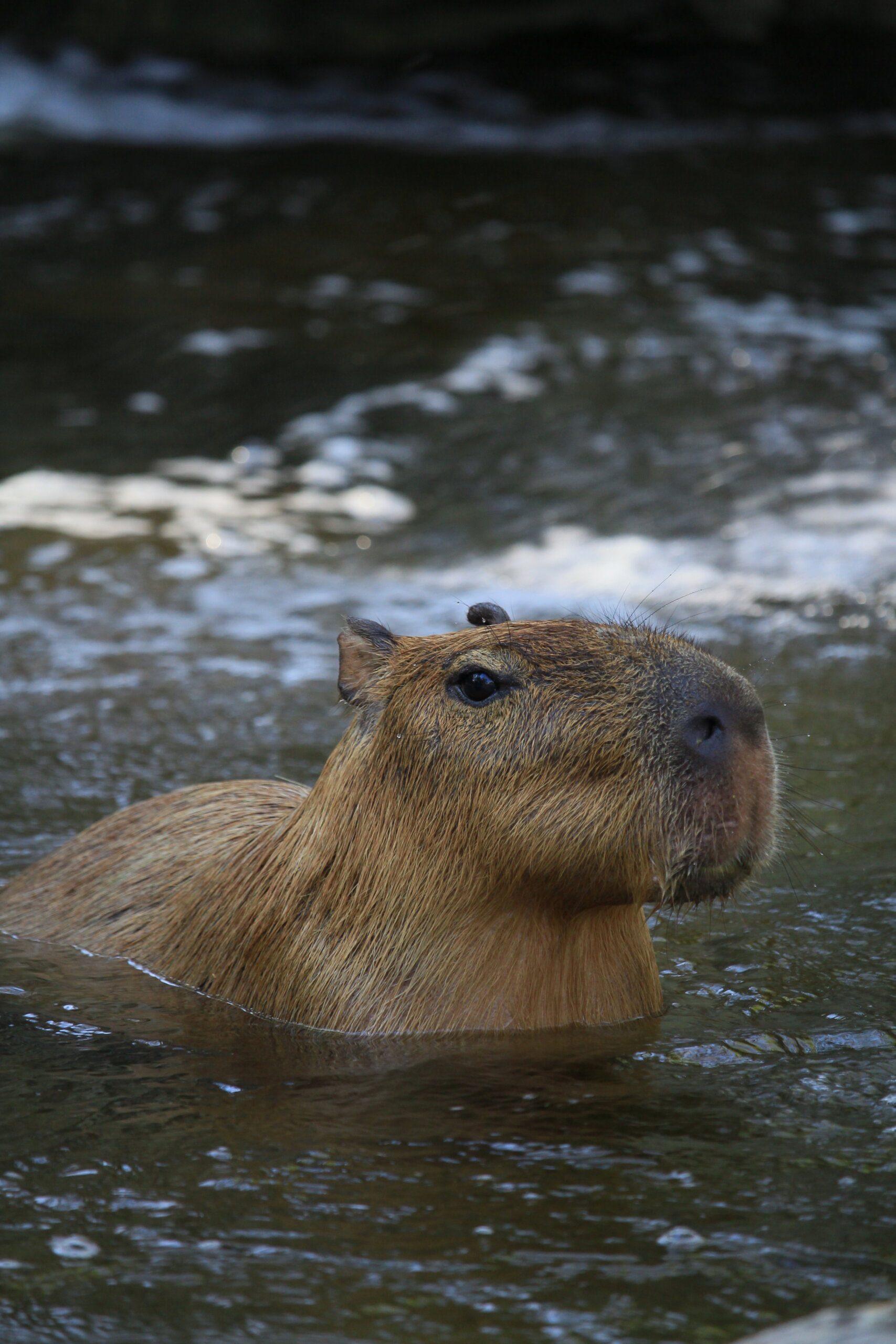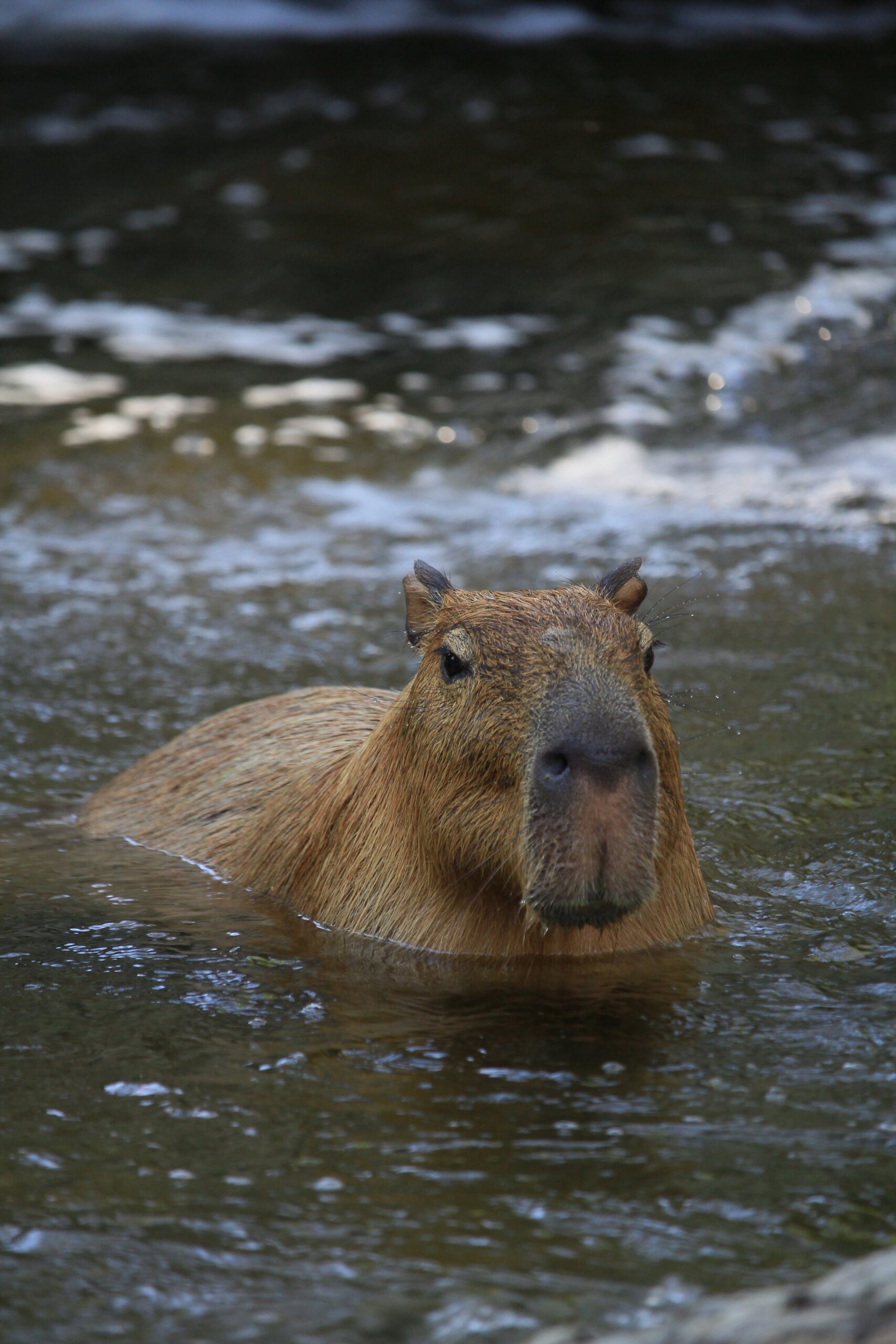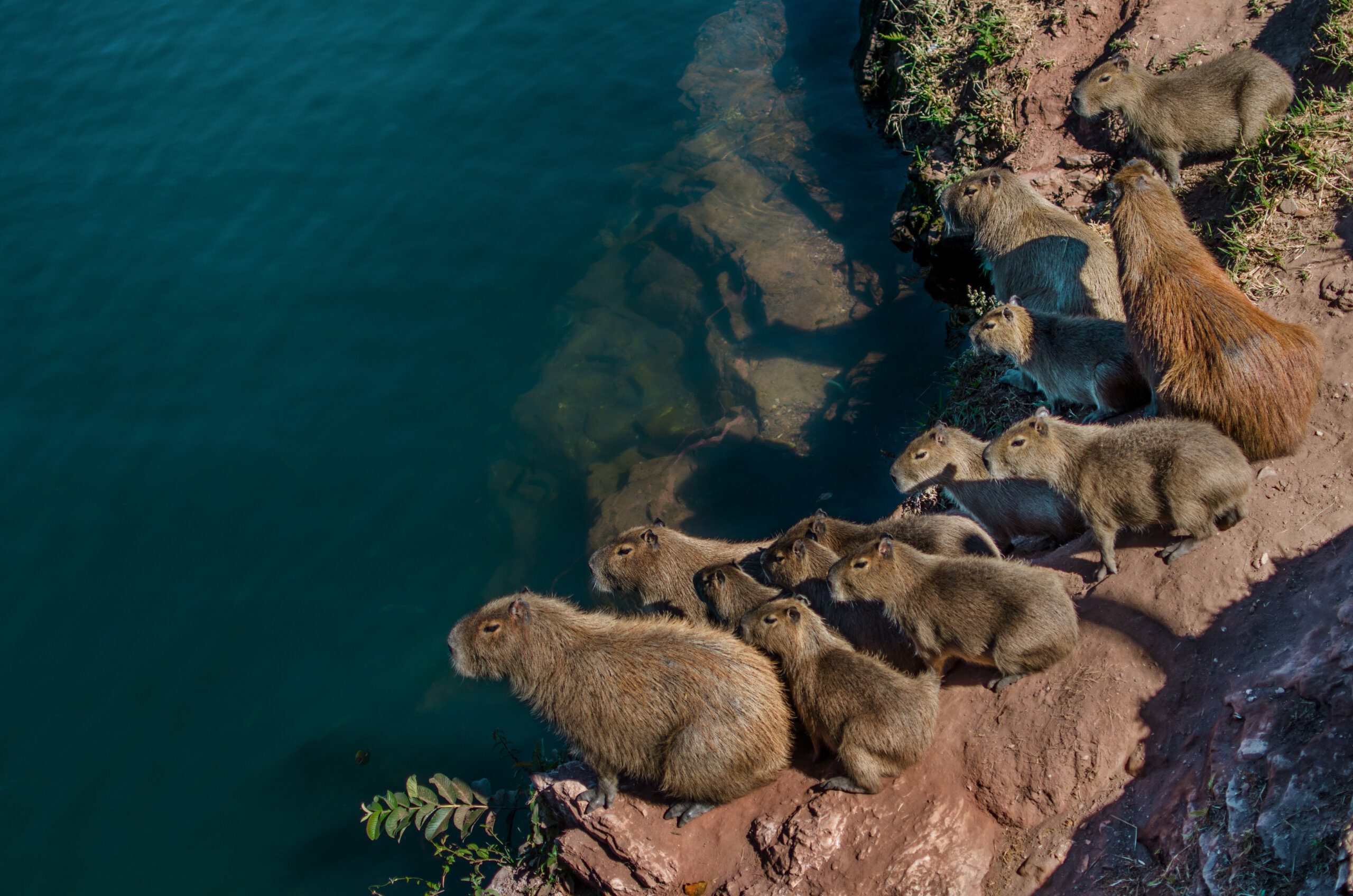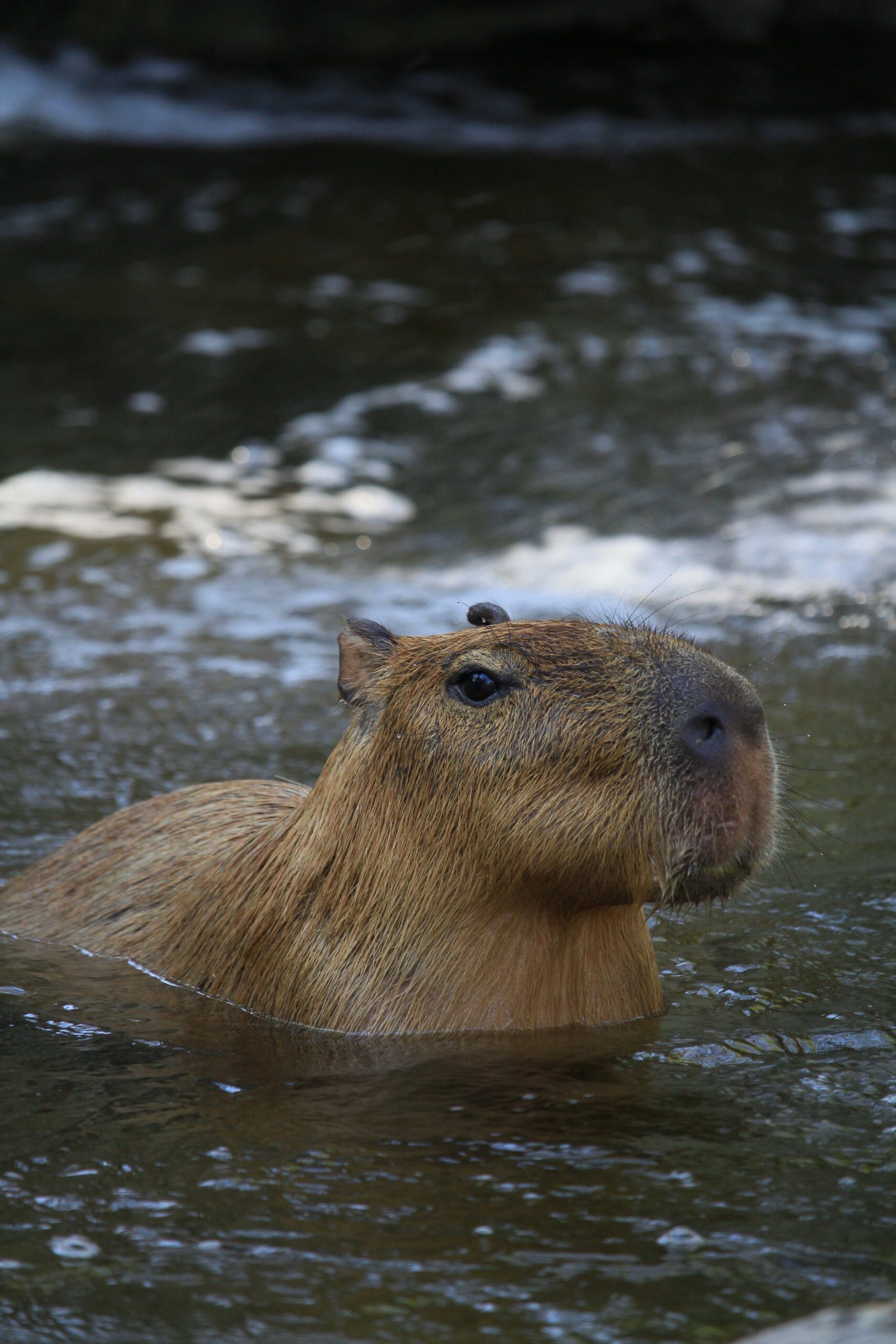Imagine stumbling upon the most adorable picture of a capybara – your heart instantly melts. This captivating image captures the essence of these fascinating animals, showcasing their endearing nature and unique charm. With their adorable faces and large, expressive eyes, capybaras have an undeniable appeal that captivates people all over the world. It’s hard not to be enchanted by this lovable creature, as their captivating presence brings joy and a smile to your face. Let this picture serve as a reminder of the beauty and wonder that can be found in the animal kingdom.

The Capybara: A Fascinating Creature
Capybaras are truly fascinating creatures that captivate the hearts of many animal enthusiasts. From their unique physical characteristics to their remarkable social behavior, there is so much to learn and appreciate about these gentle giants. In this article, we will explore the world of capybaras, delving into their definition, native habitat, size, diet, social behavior, and much more. So, get ready to embark on a captivating journey and discover the wonders of the capybara!
Capybara: Definition and Characteristics
The capybara, scientifically known as Hydrochoerus hydrochaeris, is a large semi-aquatic mammal that belongs to the rodent family. Native to South America, particularly the wetlands of the continent, capybaras are often referred to as the world’s largest rodents. With their sturdy bodies, short limbs, and long, barrel-shaped torsos, these incredible creatures can weigh anywhere between 77 to 146 pounds (35 to 66 kilograms). Capybaras have a lifespan of around 8 to 10 years when living in the wild, but they can reach up to 12 years in captivity.
Capybara: Native Habitat and Distribution
Capybaras find their home in the lush wetlands of South America, from Panama to northern Argentina. They can be spotted in a variety of habitats, including swamps, marshes, rivers, and tropical rainforests. These habitats provide capybaras with ample access to water, which is essential for their semi-aquatic lifestyle. The regions where capybaras are most prevalent include Brazil, Colombia, Venezuela, Paraguay, and Uruguay. These areas offer an ideal combination of water resources and vegetation to support their thriving populations.
Capybara: Size and Physical Appearance
One cannot help but be enamored by the capybara’s adorable appearance. Despite its large size, the capybara manages to exude an endearing charm that instantly captures your attention. These fascinating creatures have a stocky body covered in short, coarse hair that can range in color from reddish-brown to a more golden hue. Their impressive size, with adults measuring approximately 4.4 feet (1.3 meters) in length, is complemented by their rounded heads and small eyes.
Capybara: Diet and Feeding Habits
As herbivores, capybaras have a unique diet that mainly consists of grasses and aquatic plants. Their semi-aquatic nature allows them to easily access an abundance of vegetation, both on land and in the water. Capybaras have powerful jaws that enable them to graze on grasses with remarkable efficiency. In addition to grass, they also feed on fruits, vegetables, and other tender plants. Their diet is generally low in protein, reflecting their herbivorous nature.
Capybara: Social Behavior and Reproduction
One of the most captivating aspects of capybaras is their highly social nature. They live in large groups known as herds, which usually consist of 10 to 40 individuals. These herds, often comprised of multiple families, help capybaras find safety in numbers and provide social interaction and support. Within the herd, there is a well-defined hierarchy, with dominant individuals asserting their authority.
Capybaras engage in communal activities such as grooming, vocalizing, and swimming together. This social behavior strengthens their bonds and contributes to the overall cohesion and well-being of the herd. When it comes to reproduction, capybaras have a unique mating system. The dominant male in the herd will typically mate with multiple females. After a gestation period of approximately 150 days, the female capybara gives birth to a litter of around four to eight young, known as pups.
Adorable Picture of a Capybara
Description of the Picture
In this enchanting photograph, we see a captivating capybara perched on the grass, basking in the sunlight. The capybara’s sleek coat creates a striking contrast against the vibrant greenery that surrounds it. The picture perfectly captures the essence of the capybara, showcasing its gentle and serene nature.
Capybara’s Expressive Face
Looking at the capybara’s face in the picture, you can’t help but be drawn in by its expressive features. These creatures have a unique ability to convey a range of emotions through their facial expressions, captivating anyone who has the pleasure of observing them. Their faces are adorned with a pair of adorable eyes, which seem to radiate warmth and curiosity.
Feature Highlight: Adorable Big Eyes
One cannot help but be mesmerized by the capybara’s large and expressive eyes. Their striking eyes are not only incredibly endearing but also serve an important purpose in their survival. Capybaras have excellent vision, which allows them to detect potential threats or predators from a distance. Their eyes are also adapted to the varying light conditions of their habitat, ensuring that they can navigate both the bright sunlight and the dimmer conditions of their nocturnal activities.
Feature Highlight: Rounded Ears
Another notable feature of the capybara, which can be observed in the picture, is its rounded ears. These ears are not only adorable but also highly functional. Capybaras rely on their acute sense of hearing to detect sounds that may indicate danger or the approach of predators. Their ears can rotate independently, allowing them to precisely locate the source of the sound. This evolutionary adaptation gives capybaras an advantage in their unpredictable and potentially dangerous environment.
Feature Highlight: Unique Snout
The capybara’s snout, clearly visible in the picture, is another distinct characteristic that sets these creatures apart. Their snouts are elongated and cylindrical, allowing them to effortlessly graze on grasses and browse for food in shallow waters. With their remarkable sense of smell, capybaras can detect edible plants even when submerged in water. Their snouts have specialized muscles that enable them to close their nostrils, preventing water from entering while they are feeding.

The Capybara: An Unusual Pet
Capybaras are not only fascinating creatures in the wild but have also gained popularity as exotic pets in recent years. As much as they make adorable companions, owning a capybara comes with its own set of advantages and challenges that potential pet owners need to consider. In this section, we will explore the unique aspects of capybara ownership and offer insights into the legal considerations, special requirements, and care needed to ensure the well-being of these extraordinary pets.
Capybaras as Pets: Advantages and Challenges
Owning a capybara as a pet can be an incredibly rewarding experience for those who are prepared to provide the necessary care and attention. These gentle giants have a friendly and docile nature, making them affectionate companions. Capybaras are highly intelligent animals and can form strong bonds with their human caretakers. However, it is important to recognize that owning a capybara is not for everyone.
Capybaras require a significant investment of time, resources, and space, as well as specialized knowledge in their care. They thrive in environments that mimic their natural habitat, which means providing access to water where they can swim and graze on aquatic vegetation. Additionally, capybaras have distinct social needs and require constant companionship. Therefore, potential owners must be prepared for the challenges of providing these unique requirements.
Capybaras: Legal Considerations
Before considering capybara ownership, it is crucial to understand the legal implications associated with keeping these animals as pets. While regulations regarding capybara ownership vary from one jurisdiction to another, it is generally not legal to own a capybara in most states and countries without the necessary permits and licenses. Capybaras are considered exotic pets due to their specific needs and potential impact on local ecosystems if released into the wild. Therefore, it is essential to consult local authorities and obtain the required permits and documentation to ensure compliance with the law and the well-being of the capybara.
Capybara Ownership: Special Requirements
Caring for a capybara requires meticulous attention to their physical and emotional well-being. Providing a suitable enclosure that meets their space and environmental needs is of utmost importance. Capybaras require access to a large area, preferably with access to a pool or pond, where they can swim and cool off. The enclosure must also be securely fenced to prevent them from wandering off and to deter potential predators.
The diet of a pet capybara should closely resemble their natural feeding habits in the wild. A balanced diet includes a variety of fresh fruits, vegetables, and high-quality hay. It is advisable to consult with a veterinarian or an experienced capybara owner to ensure proper nutrition and prevent any deficiencies or health issues.
Bonding and Interaction with Capybara
Establishing a strong bond and nurturing a positive relationship with a pet capybara is paramount. These animals are highly social and thrive on companionship. Owners must spend quality time with their capybara, providing ample opportunities for interaction, play, and exploration. Engaging in activities such as grooming and gentle handling can help strengthen the bond and reinforce feelings of trust and security.
It is essential to remember that capybaras have their own preferences and boundaries. Respect their personal space and ensure that interactions are consensual. Always approach them with gentleness and avoid forcing them into uncomfortable situations. With patience, love, and understanding, a deep connection can be formed between a pet capybara and its owner.
Capybaras in Popular Culture
Beyond their remarkable characteristics and potential as pets, capybaras have found their way into popular culture, capturing the hearts of people worldwide. These charming creatures have made appearances in movies, television shows, and have even gained fame as internet sensations. Let us explore the endearing presence of capybaras in popular culture and the various ways they have become symbols of relaxation and cuteness.
Capybaras in Movies and TV Shows
Capybaras have made several notable appearances in the world of entertainment, leaving an indelible mark on audiences. From animated movies to wildlife documentaries, capybaras have featured in various productions, captivating viewers young and old. Their gentle and friendly nature is often portrayed, making them endearing characters that evoke warmth and affection. Whether as lovable sidekicks or prominent figures in wildlife narratives, capybaras continue to enchant audiences and bring joy to the screen.
Capybaras as Internet Sensations
The internet has played a significant role in propelling capybaras to stardom. In recent years, these adorable creatures have become internet sensations, with numerous videos and photos showcasing their irresistible charm. From heartwarming interactions with fellow animals to delightful moments of playfulness, capybaras have captured the attention of people worldwide. The internet’s fascination with these gentle giants has resulted in dedicated social media accounts, fan pages, and endless memes that celebrate their unique allure.
Capybaras as Symbols of Relaxation and Cuteness
Capybaras have earned a special place in the hearts of many as symbols of relaxation and cuteness. Their laid-back demeanor and unwavering tranquility have become a source of inspiration for those seeking solace and a break from the hectic pace of life. Numerous merchandise, from plush toys to clothing, has embraced the capybara’s image as a symbol of relaxation, allowing people to surround themselves with reminders of serenity and peace. The capybara’s endearing charm resonates with many, reminding us to find joy and warmth in the simplest moments.

Capybara Conservation and Threats
As we delve deeper into the world of capybaras, it is essential to address the crucial topic of their conservation and the threats they face in the wild. Despite their relatively stable populations, capybaras encounter numerous challenges due to habitat loss, human interaction, and changing ecosystems. In this section, we will explore the conservation status of capybaras, the threats they face, and the efforts being made to ensure their survival.
Capybaras in the Wild: Conservation Status
The conservation status of capybaras is generally considered to be of “Least Concern” according to the International Union for Conservation of Nature (IUCN). This classification reflects the relatively stable populations observed throughout their range. Capybaras benefit from their adaptability to different habitats and their capacity to reproduce rapidly. However, localized threats and population declines can occur, particularly in areas affected by habitat degradation and human interference.
Threats to Capybaras: Habitat Loss and Human Interaction
One of the most significant threats facing capybaras is the loss and degradation of their natural habitat. The expansion of agriculture, urbanization, and infrastructure development have led to the destruction of wetlands and the fragmentation of their habitats. This directly impacts capybaras by reducing their access to resources and increasing their vulnerability to predators.
Human interaction, including hunting and poaching, also poses a threat to capybara populations. Despite legal protection in many regions, illegal hunting still occurs for various purposes, including meat consumption, fur trade, and the pet trade. These unsustainable practices not only impact individual capybaras but also disrupt the delicate balance of ecosystems in which they play a vital role.
Conservation Efforts and Initiatives
Recognizing the importance of preserving capybara populations and the habitats they rely on, several conservation initiatives are being undertaken. These efforts include the establishment of protected areas where capybaras are given a safer environment in which to thrive. Additionally, educational programs are being implemented to raise awareness about the importance of capybara conservation and the need for sustainable practices.
Collaborative research projects are also underway to gather data on capybara populations and their ecological interactions. This vital information helps guide conservation strategies and aids in the development of policies to protect capybaras and their habitats. By combining scientific knowledge, community involvement, and conservation measures, we can ensure the long-term conservation and sustainable future of capybaras.
Capybaras: The Gentle Giants
One of the most endearing qualities of capybaras is their gentle and tolerant nature. These giants of the animal kingdom are renowned for their calm disposition, making them well-suited for interactions with humans and other animals. However, it is essential to dispel the myth about their friendliness and respect their boundaries and natural behavior.
Capybara’s Docile Nature
Capybaras are known for their docile nature, contributing to their reputation as gentle giants. They generally exhibit a calm and peaceful demeanor, which is rooted in their sociable nature. Capybaras typically avoid conflicts and are more likely to engage in peaceful interactions, such as grooming and play, rather than aggressive behavior. This serene disposition makes them a delightful presence in their natural habitat and as pets.
Capybara’s Relationship with Other Animals
Capybaras have a fascinating relationship with other animals, often forging unlikely friendships in the wild. These amiable creatures are known to coexist harmoniously with various species, including birds, turtles, and even larger mammals. Capybaras have been observed accepting the presence of other animals, often sharing resting areas and even forming symbiotic relationships. This unique ability to peacefully cohabit with different species is a testament to the capybara’s friendly and accepting nature.
The Myth About Capybara’s Friendliness
While capybaras are generally known for their docile character, it is important to dispel the myth that they are universally friendly to all beings. Capybaras have distinct boundaries and specific social interactions within their own species. While they may tolerate certain behaviors from their human caretakers or other animals, it is crucial to remember that capybaras are still wild animals at heart. Respect for their needs, preferences, and limitations is paramount in ensuring their emotional well-being. Always approach a capybara with caution and seek to establish a relationship based on mutual trust and understanding.
Why Capybaras Make Great Pets for Some
While capybaras may not be suitable pets for everyone, they do have unique qualities that make them exceptional companions for those who can provide the necessary care and attention. In this section, we will explore why capybaras are valued as therapy animals, the potential benefits of their companionship for other pets, and the joy one can find in interacting with these extraordinary creatures.
Capybaras as Therapy Animals
Capybaras have been recognized for their therapeutic qualities, leading to their inclusion as therapy animals in certain settings. Their calm and placid nature, combined with their gentle demeanor, can provide emotional comfort and support to individuals in need. Interacting with capybaras has been shown to reduce stress, alleviate anxiety and depression, and promote relaxation. These qualities make capybaras valuable companions in therapy programs, particularly for those who may benefit from the soothing presence of these gentle giants.
Capybaras as Companions for Other Pets
Capybaras can also serve as remarkable companions for other pets, further enriching the lives of their human caretakers. Due to their affable nature, capybaras often get along well with various domesticated animals, such as dogs, cats, and rabbits. Their tolerant and calm demeanor can provide a sense of comfort and companionship to other pets, fostering an environment of peaceful coexistence and shared affection. Introducing a capybara into a household with other animals requires careful supervision and a gradual and controlled approach to ensure compatibility and mutual acceptance.
The Joy of Capybara Encounters
For those fortunate enough to encounter capybaras in their natural habitat or through close interactions with them, the joy they bring is immeasurable. Observing these gentle giants in their serene state, whether grazing on grasses or wading through water, evokes a sense of calm and appreciation for the wonders of nature. The sheer presence of a capybara can ignite feelings of joy, awe, and a connection to the natural world. Sharing a moment with these enchanting creatures, whether as pets or during wildlife encounters, is a privilege that fills the heart with warmth and wonder.
Notable Capybara Facts
To further deepen our understanding and appreciation of capybaras, let us delve into some notable facts about these unique creatures. From their status as the largest rodent species to their semi-aquatic nature, capybaras continue to surprise and fascinate us with their extraordinary characteristics.
Capybara: Largest Rodent Species
Capybaras hold the esteemed title of being the largest rodents in the world. Their stocky bodies and muscular physiques contribute to their significant size, with adults measuring up to 4.4 feet in length. This impressive stature, combined with their robust weight, distinguishes them as true giants among their rodent relatives. Despite their large size, capybaras retain an innate charm and grace that endears them to all who encounter them.
Capybara: Semi-Aquatic Nature
Capybaras have embraced a semi-aquatic lifestyle, which sets them apart from many other land-dwelling mammals. Their affinity for water is due to their need for regular aquatic activities, whether swimming or soaking in shallow bodies of water. Capybaras are excellent swimmers, thanks to their webbed feet and streamlined bodies. Their semi-aquatic nature allows them to access a diverse range of food sources and provides a means of escape from potential predators, making their aquatic endeavors vital to their survival.
Capybara: Connection to Guinea Pigs and Porcupines
While capybaras may seem quite distinct from other animals, they do share intriguing connections within the animal kingdom. Capybaras are part of the Caviidae family, which also includes guinea pigs. These two species share a common ancestry and bear certain physical similarities, particularly in their teeth and digestive systems. Additionally, capybaras have a surprising link to porcupines. Both capybaras and porcupines belong to the Hystricognathi suborder, which groups them together due to shared distinguishing anatomical features.
The Capybara: Beyond the Picture
Delving into the fascinating world of capybaras offers an opportunity to appreciate the incredible beauty and complexity of these exceptional creatures. However, capturing their essence through a picture or reading about their characteristics can only scratch the surface of the vast realm of capybara behavior and ecology. To truly grasp the depth of their story, one must embark on a journey of exploration and discovery.
Exploring the Fascinating World of Capybaras
For those passionate about capybaras, there are countless resources available to delve deeper into their behavior, ecology, and role in their ecosystems. Books, documentaries, and scientific studies provide invaluable insights into their lives and shed light on the multitude of ways capybaras shape and contribute to their native habitats. By embracing this knowledge, we can develop a deeper connection with capybaras and heighten our appreciation for the delicate web of life that they are an integral part of.
Learning More about Capybara Behavior and Ecology
Studying the behavior and ecology of capybaras opens a window into their complex social structure, communication methods, and ecological impact. Researchers and wildlife enthusiasts have dedicated their studies to unraveling the intricacies of capybaras’ lives, revealing fascinating discoveries about their social hierarchy, unique vocalizations, and vital role as ecosystem engineers. These efforts help us understand the importance of capybaras within their ecosystems and the conservation measures needed to protect them.
Appreciating the Unique Charms of Capybaras
Ultimately, our appreciation for capybaras extends beyond their physical appearance or their role as pets or popular culture icons. It is their unique charms, their peaceful presence, and their ability to evoke feelings of contentment and serenity that truly captivate us. Whether we encounter them in the wild, interact with them as pets, or simply admire them from a distance, capybaras possess an enchanting allure that invites us to cherish and protect their existence for generations to come.
Conclusion
The capybara, with its fascinating characteristics, captivating charm, and gentle nature, stands as a testament to the extraordinary diversity of the animal kingdom. From the wetlands of South America to the hearts of animal enthusiasts worldwide, capybaras have forged their place as beloved creatures worthy of admiration and protection. Whether we explore their unique qualities as pets, celebrate their presence in popular culture, or strive to conserve their populations in their native habitats, our connection to capybaras reminds us of the importance of cherishing and preserving the wonders of the natural world. So, let us continue to be captivated by the capybara’s captivating presence and contribute to a future where these gentle giants continue to inspire awe and wonder.



